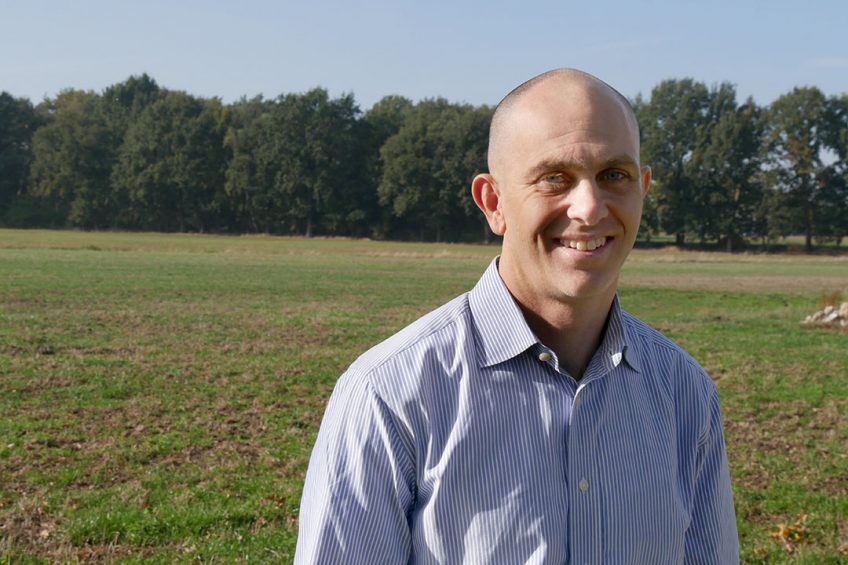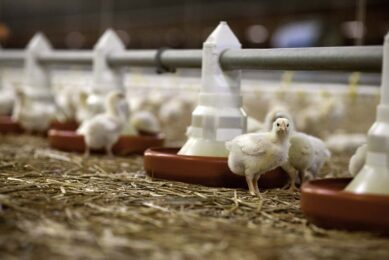Clear shift in traditional treatment of diseases

The use of antibiotics in livestock is under pressure. The issue of antibiotic resistance caused by misuse and over-use of antibiotics in livestock, is subject to scientific and regulatory discussion. Rob Kelly, President International Operations at Zoetis, sees a clear shift in antibiotic use.
Rob Kelly was speaking at the F&A Next event in May at Wageningen University. With his global experience of more than 20 years in the animal health industry, he shared his thoughts on innovation in livestock farming at the event. Animal health company Zoetis delivers medicines, vaccines and diagnostic products. With a revenue of USD$ 1.3 billion attributable to antibiotics for livestock, antibiotics are an important part of Zoetis’ total revenue of $ 5,8 billion.
According to the World Health Organization (WHO), ‘over-use and misuse of antibiotics in animals contributes to the rising threat of antibiotic resistance’. In 2017, the WHO therefore released guidelines to end giving antibiotics routinely to healthy animals. The European Union captured restrictions on the use of antibiotics in 2 veterinary medicines regulations, which were adopted in 2018. The sales of veterinary antibiotics in the EU have decreased by more than 20% between 2011 and 2016, according to a report published by the European Medicines Agency. The US has banned antibiotics to promote growth in livestock, but still allows antibiotics to be given to healthy animals to prevent diseases.
More prevention vs treatment
Mr Kelly sees that there is a major shift from treating diseases to preventing diseases. “There is a lot of innovation in this area,” adds Mr Kelly. Zoetis anticipates this trend of preventing diseases instead of treating: a primary focus for Zoetis in 2018 was to increase the scale and market position in veterinary diagnostics. As a result, there was the acquisition of the company Abaxis, which develops instruments to detect diseases in animals. Also the acquisition of start-up SmartBow, which develops electronic ear tags for cows to detect signs of disease contributed to the renewed focus of Zoetis.
SmartBow is not the only start-up Zoetis collaborates with. “We acquired SmartBow in 2018 after a few years of partnership. With this acquisition we help to speed up and scale up the development of the technology. That’s the same with other start-ups we collaborate or partner with. These start-ups are drivers for innovation at Zoetis and the collaboration can help start-ups further in their development.” Mr Kelly sees that the collaboration with start-ups is one of the multiple drivers for the existing R&D department within the company.
As a result of the changing focus of Zoetis and also the market, the scope of the activities of Zoetis is becoming broader. From a company in mainly vaccines and medicines to a company also with diagnostics for detecting diseases, genetic testing for prediction and services. “This does not mean that we think that antibiotics must not be used. We believe that veterinarians and farmers need the right tools to help their animals, with the condition that they use them responsibly.”
F&A Next |
Growth in developing markets
Another trend according to Mr Kelly is the rapid growth of and in developing markets. Zoetis mainly sees opportunities in developing countries like Brazil and India. The company wants to do most of its future investments in these countries. “The middle-class in developing countries is growing fast, the population is growing fast and the Western trends are also reaching the developing countries. That means that attention paid to, for example, sustainability and food safety is increasing and becoming more global.” Another Western development that is moving to other countries is regulation, Mr Kelly adds. “In the EU for example, we see a lot of regulation in animal health related subjects. There’s a lot of focus on product and user safety. Additionally, we see a lot of innovation protection. Also these topics are becoming more and more important in developing countries. Standards for animal health products are being developed and implemented at a high pace.”
Zoetis has to deal with a lot of developments that are often driven by public opinion, followed by political influences and regulations that farmers and veterinarians have to cope with. “These 3 pillars drive a lot of the innovation in animal health. However, I think we can dispute the difference people think there is between the 3 pillars. We all want good and safe food products and healthy animals. Our concerns and interests are not as far apart as we think. Keeping everybody happy is the thing you strive for.” A good example of something everybody wants is reducing pain, especially in cattle. “It is something that is not covered well enough yet. In the coming years we will continue with innovation in pain management. Another ongoing subject that will drive innovation is sustainability. We will need more food for more people, on the same amount of land, with fewer animals. That will keep us, and the whole livestock sector, busy in the coming years.”















